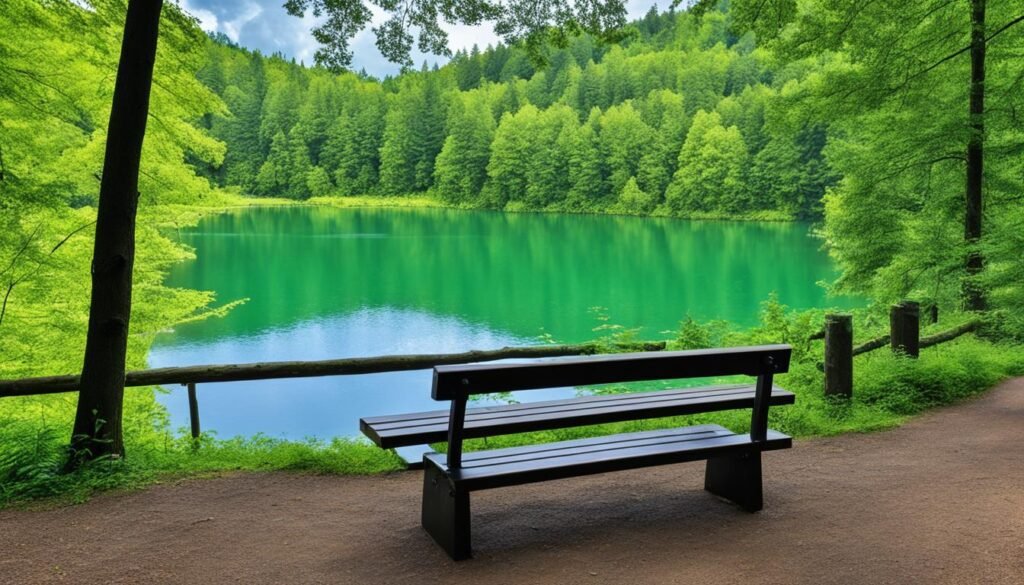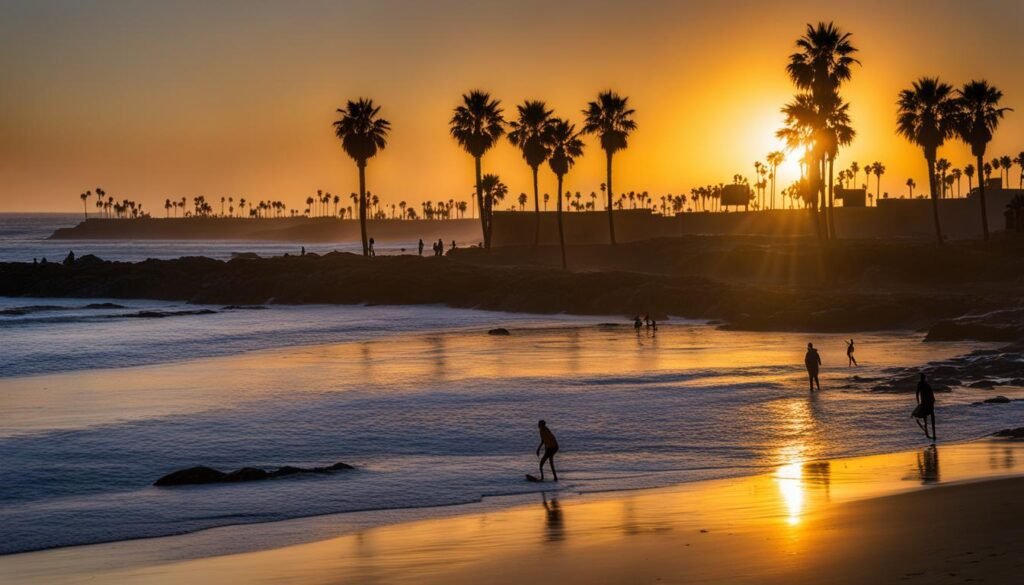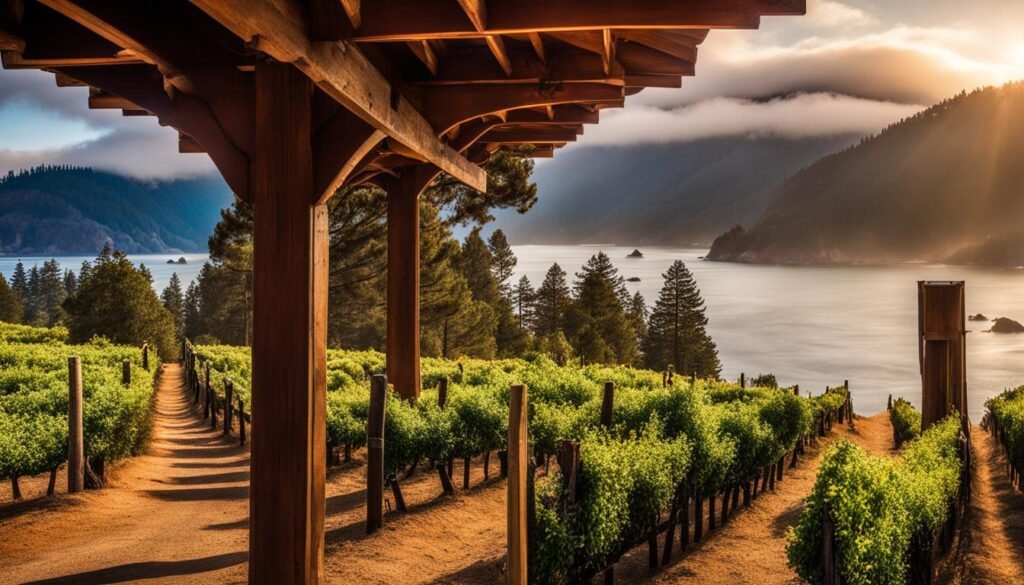Welcome to my blog! In this article, we will delve into the essential work of the Wildlife Conservation Board (WCB) in preserving and protecting wildlife habitats in California. Whether you are passionate about wildlife conservation, interested in grant opportunities, or simply curious about the efforts being made to safeguard nature, you’ll find valuable information here.
The Wildlife Conservation Board (WCB) was established in 1947 with a singular purpose – to administer a capital outlay program dedicated to wildlife conservation. As an independent board, the WCB has the authority to allocate funds for the acquisition of land and waters suitable for recreation purposes and the preservation, protection, and restoration of wildlife habitat. By focusing on land acquisition, habitat restoration, and the development of wildlife-oriented public access facilities, the WCB actively contributes to the preservation and protection of wildlife and the overall health of ecosystems.
Key Takeaways:
- The Wildlife Conservation Board (WCB) was created in 1947 to administer a capital outlay program for wildlife conservation in California.
- The WCB has the authority to allocate funds for the purchase of land and waters suitable for recreation purposes and the preservation, protection, and restoration of wildlife habitat.
- Key responsibilities of the WCB include land acquisition, habitat restoration, and the development of wildlife-oriented public access facilities.
- The WCB offers several programs aimed at enhancing and restoring habitat for wildlife, including the Habitat Enhancement and Restoration Program (HERP).
- The WCB is actively involved in habitat restoration efforts throughout California, focusing on various habitats such as coast, forest, desert, wetland, and grassland.
Overview of the Wildlife Conservation Board Programs
The Wildlife Conservation Board (WCB) offers a range of programs dedicated to enhancing and restoring wildlife habitat in California. One of the oldest programs, the Habitat Enhancement and Restoration Program (HERP), supports various restoration projects across diverse habitat types such as coast, forest, desert, wetland, and grassland. Through HERP, the WCB aims to promote habitat enhancement and create sustainable ecosystems for wildlife.
In addition to HERP, the WCB has implemented other conservation programs that focus on specific initiatives. These programs include:
- Wildlife Corridors: The WCB recognizes the importance of wildlife corridors in preserving the connectivity of ecosystems. By implementing measures to protect and restore wildlife corridors, the WCB ensures the safe migration and movement of various species.
- Fisheries Enhancements: Recognizing the significance of fisheries in the ecological balance, the WCB supports programs aimed at enhancing fisheries and restoring aquatic habitats. These projects contribute to the conservation of fish populations and promote sustainable fishing practices.
- Conservation of Endangered Species: The WCB plays a vital role in safeguarding endangered species in California. Through dedicated conservation programs, the WCB strives to protect and restore habitats critical to the survival of endangered species, ensuring their long-term preservation.
These programs are funded through the Habitat Conservation Fund and the support of voter-approved bonds. By actively engaging in habitat enhancement, conservation, and wildlife management initiatives, the WCB contributes significantly to the preservation and restoration of California’s diverse wildlife and ecosystems.
Land Acquisition for Wildlife Conservation
One of the key functions of the Wildlife Conservation Board (WCB) is land acquisition for wildlife conservation purposes. As part of its mission to protect and preserve wildlife habitat, the WCB approves and funds projects that dedicate lands within the state for the benefit of wildlife.
Land acquisition is a crucial strategy in wildlife conservation, as it allows for the preservation and protection of critical habitats that support endangered species and other wildlife. The WCB acquires land through various means, including purchase, easements, and exchanges, ensuring that these lands remain permanently dedicated to wildlife conservation.
By acquiring land, the WCB ensures that crucial habitats are safeguarded, providing refuge for a variety of wildlife species. This includes preserving important breeding grounds, feeding areas, and migration corridors that are crucial for the survival and well-being of wildlife populations.
To support land acquisition efforts, the WCB allocates grants to fund the purchase of land for wildlife conservation. These grants play a vital role in ensuring the preservation and restoration of critical habitats. They enable the WCB to partner with landowners, conservation organizations, and other stakeholders to secure and protect lands that are essential for wildlife habitat preservation.
Through strategic land acquisition, the WCB contributes to the long-term conservation of biodiversity and promotes the sustainability of California’s natural resources. By working collaboratively with partners and communities, the WCB enhances efforts to create a network of protected lands that support wildlife populations and promote healthy ecosystems.
Land acquisition is a key component of the WCB’s comprehensive approach to wildlife conservation. By acquiring and protecting critical habitats, the WCB ensures the long-term survival of endangered species and contributes to the overall health and resilience of California’s diverse ecosystems.


Habitat Restoration Efforts by WCB
The Wildlife Conservation Board (WCB) is actively involved in habitat restoration efforts throughout California. These restoration projects aim to restore and improve the quality of various habitats such as coast, forest, desert, wetland, and grassland.
The restoration work helps in preserving the biodiversity of ecosystems, supporting wildlife habitats, and enhancing the overall health of the environment. It plays a crucial role in ensuring the long-term survival of endangered species and the preservation of their natural habitats.
WCB funds and supports a wide range of restoration projects that focus on restoring degraded habitats, creating wildlife corridors, and enhancing fisheries. By restoring and rejuvenating these habitats, WCB contributes to the preservation and sustainability of California’s rich wildlife heritage.
Restoring Degraded Habitats
One of the key objectives of WCB is to restore degraded habitats. Through collaborative efforts with various partners and stakeholders, WCB seeks to reverse the negative impacts of human activities and restore these habitats to their former ecological glory. These restoration projects involve activities such as reforestation, erosion control, and invasive species management to ensure the habitat’s viability and resilience.
Creating Wildlife Corridors
Another important focus area of WCB is the creation of wildlife corridors. These corridors serve as vital pathways that connect fragmented habitats, allowing wildlife to move freely and access essential resources. By establishing these corridors, WCB aims to mitigate the negative effects of habitat fragmentation, promoting genetic diversity, and maintaining healthy populations of wildlife species.
Enhancing Fisheries
WCB recognizes the importance of healthy aquatic ecosystems and the role they play in supporting diverse fish populations. To this end, WCB funds restoration projects that focus on enhancing fisheries. Through activities such as habitat improvement, water quality management, and fish stocking, these projects contribute to the long-term sustainability of fish species and the overall health of aquatic ecosystems.
Through its habitat restoration efforts, the Wildlife Conservation Board is making a significant impact on the preservation and protection of wildlife habitat and the overall health of ecosystems in California. By restoring and enhancing habitats, WCB ensures the continuation of vital ecological processes, the survival of endangered species, and the beauty of California’s diverse wildlife habitats.
Wildlife-Oriented Public Access Facilities
The Wildlife Conservation Board (WCB) is dedicated to not only preserving wildlife habitats but also providing wildlife-oriented public access facilities. These facilities are designed to promote public engagement with nature and create opportunities for recreational activities. By authorizing the construction of facilities on properties it has a proprietary interest in, WCB ensures that the public can enjoy the beauty of California’s wildlife while contributing to conservation efforts.
WCB prioritizes public access projects that offer both compatible public and private uses, allowing visitors to explore and appreciate the natural environment while respecting the needs of wildlife and their habitats. These projects contribute to wildlife-oriented education and research, fostering a greater understanding of the importance of conservation and environmental stewardship.


These wildlife-oriented public access facilities provide ample recreational opportunities for individuals and families to engage with nature. Visitors can enjoy activities such as birdwatching, hiking, photography, and wildlife observation. The facilities are carefully designed to ensure minimal disturbance to the surrounding habitat, allowing visitors to immerse themselves in the natural beauty of California’s wildlife while having a positive impact on conservation efforts.
Recent Grant Approvals by WCB
The Wildlife Conservation Board (WCB) is committed to supporting habitat restoration projects and protecting fish and wildlife across California. We are pleased to announce that we have recently approved several grants, totaling approximately $83.15 million, to fund initiatives that not only restore habitats but also provide new and improved public access, recreational, and educational opportunities.
These grants will play a crucial role in preserving the natural beauty and biodiversity of California’s wildlife. Let’s take a look at some of the approved projects:
- Acquisition of Land in the Carmel Valley for Wildlife Habitat Preservation: This project aims to secure valuable land in the Carmel Valley, ensuring the preservation and protection of critical habitats for various wildlife species. Through this grant, we aim to create safe havens for native wildlife and promote their long-term sustainability.
- Restoration of Coastal Prairie Habitat: Coastal prairies are essential ecosystems that provide a habitat for a wide range of plant and animal species. This grant will support the restoration of coastal prairie habitats, improving their ecological health and resilience, and safeguarding the biodiversity they support.
- Creation of High-Quality Habitat for Imperiled Pollinators: Bees, butterflies, and other pollinators play a vital role in our ecosystem. This project focuses on creating high-quality habitats that support imperiled pollinators, helping to ensure their survival and maintain the delicate balance of our ecosystems.
- Development of Shovel-Ready Plans for the Preservation of Sonoma Creek Baylands: Sonoma Creek Baylands is a valuable wetland area that provides a habitat for numerous bird and aquatic species. With this grant, we aim to develop shovel-ready plans for the preservation and restoration of this ecologically significant area, ensuring its long-term protection for future generations to enjoy.
These are just a few examples of the diverse projects that have received grant approvals from the Wildlife Conservation Board. Each project contributes to the conservation and restoration of wildlife habitats, helping to preserve California’s natural heritage for future generations.
By investing in these crucial initiatives, we are not only protecting our natural resources but also creating opportunities for people to connect with and learn from the wonders of nature. Together, we can make a difference in wildlife conservation and environmental stewardship.
Stay tuned for more updates on the incredible projects supported by the Wildlife Conservation Board!
Contact Information for the Wildlife Conservation Board
For more information about the Wildlife Conservation Board (WCB) and to inquire about grant applications or other matters, you can contact WCB through various channels.
- Physical address: 715 P Street, 17th Floor, Sacramento, CA 95814
- Mailing address: Wildlife Conservation Board c/o CDFW, P.O. Box 944209, Sacramento, CA 94244-2090
- Phone: (916) 445-8448
You can also visit their website at wcb.ca.gov to find out more about their initiatives and upcoming events.
Stay connected with the Wildlife Conservation Board to stay up to date on the latest conservation efforts and grant opportunities.
Conclusion
The Wildlife Conservation Board (WCB) is dedicated to the preservation and protection of nature and wildlife habitats in California. Their tireless efforts in land acquisition, habitat restoration, and the development of wildlife-oriented public access facilities are instrumental in ensuring the conservation of endangered species and the overall health of ecosystems.
By allocating grants and supporting a diverse range of conservation projects, WCB actively promotes environmental protection. Through their work, they strive to create a harmonious balance between human activities and the preservation of natural resources, allowing future generations to appreciate the beauty and biodiversity of California’s wilderness.
WCB’s commitment to wildlife preservation and environmental stewardship is a testament to their unwavering dedication. Through collaborative efforts and partnerships, they continue to pave the way for a sustainable future, inspiring individuals and organizations to actively participate in the conservation of our precious natural heritage.
FAQ
What is the Wildlife Conservation Board (WCB)?
The Wildlife Conservation Board (WCB) is a separate and independent board created in 1947 to administer a capital outlay program for wildlife conservation in California. It is responsible for allocating funds for the purchase of land and waters suitable for recreation purposes, as well as the preservation, protection, and restoration of wildlife habitat.
What programs does the Wildlife Conservation Board (WCB) have?
The WCB has several programs, including the Habitat Enhancement and Restoration Program (HERP) that supports restoration projects across different habitat types. They also focus on wildlife corridors, fisheries enhancements, and the conservation of endangered species.
How does the Wildlife Conservation Board (WCB) acquire land for wildlife conservation?
The WCB approves and funds projects for land acquisition through purchase or other means. Their grants ensure the preservation and restoration of critical habitats for endangered species and other wildlife.
What is the Wildlife Conservation Board’s (WCB) role in habitat restoration?
The WCB is actively involved in habitat restoration efforts throughout California, aiming to restore and improve the quality of various habitats. Projects focus on restoring degraded habitats, creating wildlife corridors, and enhancing fisheries.
Does the Wildlife Conservation Board (WCB) develop public access facilities?
Yes, the WCB focuses on providing wildlife-oriented public access facilities to encourage public engagement with nature and recreational activities. They prioritize projects that offer compatible public and private uses and contribute to wildlife-oriented education and research.
What recent grants has the Wildlife Conservation Board (WCB) approved?
The WCB recently approved grants totaling approximately $83.15 million for habitat restoration, fish and wildlife protection, and improved public access and recreational opportunities. These grants funded projects such as land acquisition, habitat preservation, and the development of plans for conservation.
How can I contact the Wildlife Conservation Board (WCB)?
You can contact the WCB by visiting their website at wcb.ca.gov or reaching out to them via phone at (916) 445-8448. You can also visit or mail them at Wildlife Conservation Board c/o CDFW, P.O. Box 944209, Sacramento, CA 94244-2090.
Why is the work of the Wildlife Conservation Board (WCB) important?
The WCB plays a crucial role in safeguarding nature and wildlife habitats in California. Through land acquisition, habitat restoration, and the development of public access facilities, they contribute to the preservation and protection of endangered species and the overall health of ecosystems.









